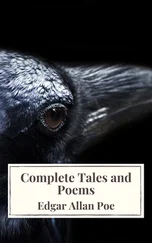I traveled from Choromoro to Sucre, where I talked with a resident surgeon who had operated on Jacinto, and I explained that Trypanosoma cruziwas the cause of Jacinto’s empacho. After initial infection, metacyclic trypomastigote forms of T. cruzi rapidly travel from the blood to neuron cells of the heart, colon, and esophagus (see Figure 5). There the trypomastigotes encyst, reproduce, and produce amastigotes. These amastigotes change into trypomastigotes and then reenter the blood to be picked up by vinchuca bugs. Encysted amastigotes live within these basically hollow organs, which they eventually destroy. They denervate muscles of the intraneural nervous plexus.
Particular zydomes (strains) of the parasite show a preference for particular organs. T. cruzi zydomes in the geographical Department of Sucre seem to prefer the colon. T. cruzi, although once considered as a single pathogenic factor in Chagas’ disease, is further differentiated into some 100 strains in Bolivia alone, each with its unique genetic structure and destructive capabilities (see Appendix 2: Strains of T. cruzi ).
The Spread of Chagas’ Disease in the Andes
The spread of Chagas’ disease throughout the Andes is related to environmental and social factors that bring together T. cruzi, Triatoma infestans, and humans. Vinchucas ( Triatoma infestans ) probably transmitted T. cruzi to humans as early as 6,000 years ago when early Andeans occupied caves and rock shelters in the central Andes around Pampa de Junin (Wheeler, Pires-Ferreira, and Kailicke 1976).
Another possibility is that early Andeans acquired Chagas’ disease by ingesting raw infected meat of alpacas, llamas, guanacos, guinea pigs, cavy, and deer. These animals probably hosted T. infestans before the Pleistocene epoch and have been found in early Andean archaeological sites (Neghme 1982, Dauelsberg 1983).
The cohabitation of vinchucas, T. cruzi, and humans probably started during the third millennium B.C., a preceramic period, when Andeans began living in settled agricultural communities in permanent dwellings of stone or structures of adobe walls with straw roofs (Nufiez 1983). One such community, at La Galgada, Peru, has recently been excavated (Grieder et al. 1988). These early Andeans cultivated squash, gourds, guava, lúcuma, lima beans, and avocado using irrigation canals. They lived in scattered clusters of small houses, carrying out ceremonies in various chambers which permitted seating only around a circle with a fire in the center. They made cloth with harness looms.
By the second millennium B.C., the people at La Galgada were trading for shells from as far off as Ecuador. They lived in hereditary kin groups. The spread of Chagas’ disease probably was precipitated in such settlements by the proximity of humans and animals (especially guinea pigs) in houses and villages where insect vectors could easily feed, rapidly passing parasites from infected to uninfected mammals. Infected Andeans spread the parasite from village to village in their travels with alpacas and llamas, also carrying parasites and insects in their cargo.
The Wankaris of Tarapacá descended from nomadic hunters and gatherers who had migrated 3,000 years ago from the shores of Lake Poopó in the southern highlands of the Andean mountains across the Atacama desert into the Quebrada de Tarapacá (Nuñez 1982). For thousands of years they foraged and hunted within the southern Andes. They fished and gathered mollusks, berries, nuts, and carrion meat. They lived in caves where they built fires, cooked meat, and told stories. These caves were also inhabited by bears, rats, cavies, viscacha, bats, and triatomine insects.
Around the beginning of the first millennium B.C., Wankaris had changed their nomadic and foraging lifestyle to become semisedentary farmers, herders, and gatherers (Wheeler, Pires-Ferreira, and Kailicke 1976). The Quebrada de Tarapacá provided a more habitable place to settle down, with a warmer climate and lower altitude, 3,737 feet (1,100 m.), than the frigid climate and higher altitudes of the mountains around Lake Poopó at 11,700 feet (3,600 m.).
Also by this time, it is thought that vinchucas inhabited human houses as their primary environment in agroceramic centers of Argentina, southern Peru, and eastern and central Bolivia (notably in Cochabamba, an epicenter from where they evolved from sylvatic, or forest, to domiciliary environments, a fact indicated by the presence of both types there today). Domiciliary preferences of vinchucas enabled them to rapidly reproduce and infect animals and humans, resulting in widespread endemic Chagas’ disease. Vinchucas becoming domiciliary was about as devastating to Andeans’ health as the domestication of alpacas and llamas was to improving their lives. Vinchucas traveled and lived with their herds, spreading T. cruzi up and down the Andes and well into the Amazon.
Certain environmental factors contributed then, as they do now, to triatomines adapting from sylvatic to domestic habitats: the increased size and growth of villages encroached upon their forest habitats and diminished the number of sylvatic mammals from which they could ingest blood meals, while domiciliary environments with humans and animals crowded together provided increased feeding and nesting opportunities for vinchucas.
Human migrants are important vectors of ecological exchange. Humans tend to dominate any environment in which they are a part, and colonists are a decisive element in any biological conquest. Because the constantly migrating early Andeans were subject to changing environments, they were less able to dominate these environments, in part because diseases spread faster than they could adapt to them. Early Andeans then, and migrating peasants today, transverse a range of microbes, as also was illustrated in the previous chapter when railroad expansion into tropical forests of Brazil brought a disproportionate amount of disease to the workers.
Even though Triatoma infestans inhabited houses in the Andes for thousands of years and symptoms of Chagas’ disease were found among the Wankaris, T. cruzi is first found within an Inca mummy of the central Andes dated around 1400 B.C. (Fornaciari et al. 1992). In 1992, paleopathologists from the University of Pisa examined the mummy of a twenty-year-old woman from Cuzco, ancient capital of the Inca empire from 1275 to 1532, kept at the National Museum of Anthropology and Ethnology in Florence. The mummy sits in a crouched position, wrapped in coils of a basket, with her face protruding through the top. Mummification was customary for Incas until the conquest of Peru in 1532, after which missionaries prohibited it, considering it ancestor worship. The mummified Inca’s heart, esophagus, and colon were abnormally enlarged, suggesting a megavisceral syndrome similar to that of the Wankari mummies.
Paleopathologists examined the mummy’s tissues by means of electronomicroscopy and immunohistochemistry and discovered round nests of amastigotes of Trypanosoma cruzi within the myocardium and esophagus. Their conclusions were written in The Lancet, January 11, 1992: “The macroscopic, historical, immunohistochemical, and ultrastructural findings in this Peruvian mummy constitute an ancient case of chronic Chagas’ disease. This is the first direct demonstration of this disease, and agent causing it in South America during the Inca empire immediately before the Spanish conquest of that continent.”
Discoveries at Lassance, Quebrada de Tarapacá, and Cuzco fill in some of the early history of Chagas’ disease in the Andes, but there remains a large void. Archaeologists, physical anthropologists, parasitologists, and paleopathologists have contributed to our knowledge of Chagas’ disease, and further interdisciplinary research is relevant to understanding Chagas’ disease.
Читать дальше












